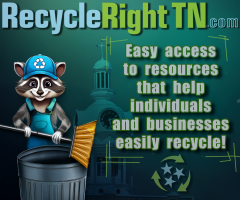Entering international or domestic markets—particularly when shipping to Hawaii—requires careful logistical planning and strategic execution. Whether you're a first-time shipper or an experienced business, understanding the container shipping process is essential to ensure a smooth operation. Below are the critical factors to consider before arranging container shipping to Hawaii.
- Identify What You’re Shipping
Clearly identifying the cargo you intend to ship is the first and most important step. Doing so will streamline the entire process and help you select the correct equipment and service type.
- Cargo Type: Is the shipment perishable, general, or hazardous? Clarifying this upfront helps avoid delays and prevents customs issues or cargo rejection.
- Special Handling Requirements: Fragile, hazardous, or sensitive goods require specialized handling and possibly specific container types, such as reefer (refrigerated) or tank containers.
- Container Size Selection: The type and volume of cargo will determine whether a 20-foot, 40-foot, or specialized container is required. Choosing the right size protects the cargo and improves cost-efficiency.
- Cargo Characteristics: Evaluate dimensions, weight, and the need for protective measures. If the cargo is oversized or unusually shaped, customized handling may be necessary.
- Assess Weight and Dimensions
Accurate cargo dimensions and weight calculations are essential for proper container selection and cost estimation.
- Container Specifications: Larger and heavier cargo may require high-cube or open-top containers, and could incur extra handling or overweight charges.
- FCL vs. LCL: Decide whether Full Container Load (FCL) or Less than Container Load (LCL) best suits your shipment. FCL is typically more secure and cost-effective for large volumes, while LCL allows shared space for smaller shipments.
- Define Your Shipping Route
Establishing the origin and final destination helps determine transit requirements and associated costs.
- Domestic vs. International: Domestic shipments (within the U.S.) may follow different processes than international ones. Shipping to Hawaii often includes a combination of land and ocean transport.
- Customs & Compliance: Be aware of import/export regulations, especially for international cargo. Understanding duties, taxes, and required documentation is critical for avoiding delays.
- Service Scope: Decide whether you need door-to-port or full door-to-door service. More comprehensive services may incur higher costs but offer greater convenience.
- Understand Logistics and Support Services
Some shipments require end-to-end logistics solutions, including inland transportation and warehousing. Confirm with your shipping provider whether the following services are included:
- Ocean Freight & Inland Transport
- Customs Clearance Support
- Warehousing or Transloading Services
- Required Documentation & Deadlines
Compare service providers based on their capabilities, reliability, and customer support—not just their rates.
- Plan Realistic Timelines
Shipping to Hawaii can take time, particularly when ocean transport is involved. Proper planning ensures timely delivery and helps avoid additional charges.
- Shipping Seasonality: Holiday seasons or peak periods can extend lead times and increase rates.
- Transport Mode: Ocean freight is the most common and efficient method for Hawaii-bound containers but generally requires longer transit time.
- Build-in Flexibility: Account for possible weather delays, port congestion, or carrier scheduling changes.
- Estimate Costs and Understand Potential Fees
Several elements contribute to the overall shipping cost. Understanding these in advance can help you budget more accurately:
- Base Shipping Rates: Includes freight charges, port handling, and basic insurance.
- Accessorial Fees: May include chassis usage, fuel surcharges, security fees, and documentation handling.
- Penalties and Surcharges: Demurrage (delays in picking up containers) and detention (delays in returning containers) are common if timelines are exceeded.
- Simplify the Process with Expert Support
If this is your first time arranging container shipping to Hawaii, it’s advisable to work with an experienced freight forwarder. A reliable logistics provider will:
- Help you select the appropriate container size and type
- Assist with documentation and regulatory compliance
- Provide transparent pricing with no hidden fees
- Ensure safe and timely delivery to the destination
Conclusion
Container shipping to Hawaii involves more than simply loading goods into a box. It requires careful planning, regulatory awareness, and coordination with experienced professionals. By taking the time to understand your needs and working with a knowledgeable logistics partner, you can avoid unnecessary delays, reduce risk, and ensure a successful shipment.












